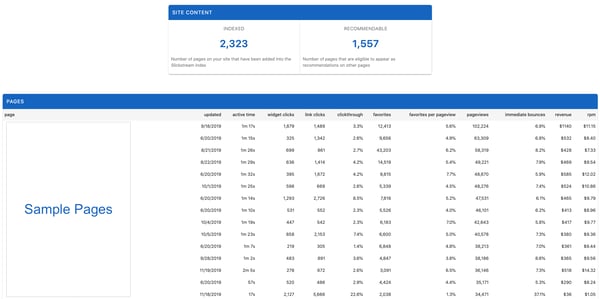How Slickstream Calculates Your RPM
Publishers who review Slickstream's analytics for their site have asked us about the RPM and revenue numbers that we report. Where do those come from? How can you provide this down to the page level?

The data we collect with the Slickstream Engagement Suite is based on "real-time bidding" or "header bidding" as most people call it these days. It is a pseudo-standard used by most ad networks that compete for space on your site. You can read about it on Wikipedia. If you use an ad network service such as Raptive or Mediavine, you'll find that most of the ads that they place on your site are served up from major ad networks using header bidding. (More on that in a minute.)
The de facto standard for supporting header bidding within the browser is prebid.js. If your site (via your ad network) is using prebid, and we are integrated with your site, then we are able to monitor header bidding in real-time as it happens on your pageviews. We simply record every "winning bid" event from prebid.js (for each ad slot on your page), and we add that amount to the revenue totals we maintain for each of your pages.
When we report RPM (revenue per 1000 pageviews), we are simply dividing revenue by the number of pageviews in the same period (times 1000 to get to conventional RPM values). Comparing RPMs across pages helps to tell you how much any given pageview generates for you. For example, pageviews on your home page may be frequent, but they generally do not provide nearly as much ad revenue per pageview compared with your content pages. You can see that clearly within our Content analytics.

This revenue data can be quite useful for a variety of things -- such as comparing the relative value of different pages based on revenue. But there are many caveats to keep in mind:
- The amount of money you actually earn is not based on those "winning bid" events. It is more complicated. Once the ad is actually shown on your page, there is a separate record maintained by the advertiser and there is some reconciliation required to determine the amount owed to you.
- Just because there is a "winning bid" doesn't mean that your ad network will necessarily display the ad. They might choose an even higher-valued ad from an affiliated advertiser that is placing ads outside of the header bidding framework.
- Your ad network is probably placing additional ads on your site via these separate advertiser agreements and we don't know the value of these ads being placed.
- We currently only pay attention to header bids that are declared in US dollars. Some international sites and/or advertisers may be using other currencies that we ignore.
Suffice it to say that the revenue and RPMs we tell you about (if any) are a rough signal that is probably correlated with your actual advertising revenue. Your ad network partner should certainly be able to give you more accurate and complete data. Our main goal of reporting revenue is to help you (and us) make better decisions regarding engagement. For example, we can take revenue into account as a factor to make various engagement decisions and to optimize various workflows.
Still confused? Ask us and we'll try to help.
